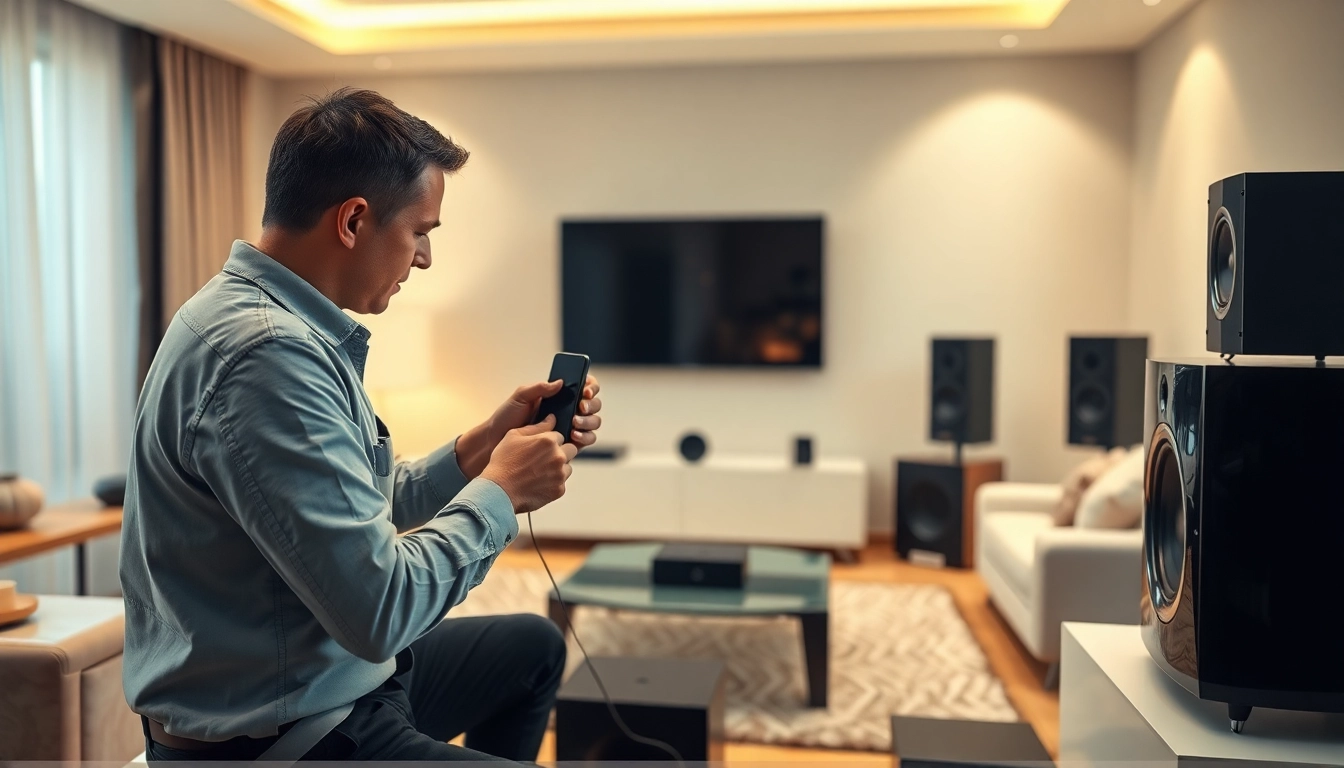Understanding Home Audio Systems
What is a Home Audio System?
A home audio system integrates various audio components to enhance sound quality throughout your living spaces. It encompasses multiple devices, from speakers and amplifiers to receivers and soundbars, all synchronized to deliver an exceptional auditory experience. Unlike standard TV audio, home audio systems provide richer soundscapes, making it ideal for movie lovers, music aficionados, and gamers alike.
Key Components of a Home Audio Setup
Your home audio system typically includes:
- Speakers: The heart of any sound system. Options include floor-standing, bookshelf, and in-wall models.
- Receiver: Acts as the command center, decoding audio signals and distributing them to speakers.
- Subwoofer: Enhances the low frequencies, providing that deep bass effect that adds excitement to music and movies.
- Amp: Boosts audio signals to achieve higher volumes without distortion.
- Source Device: This can be a CD player, streaming device, or a computer supplying the audio input.
Benefits of Professional Installation
Opting for professional home audio installation near me can greatly enhance your setup. Professionals bring expertise in acoustics, ensuring optimal speaker placement and system calibration. This expert insight can significantly reduce the risk of common installation pitfalls, such as audio lag or poor sound quality.
Finding the Right Home Audio Installation Near Me
Researching Local Audio Installers
When searching for audio installers, consider local professionals with established reputations. Use resources like Google Maps, Yelp, or Angi to find rated services in your area. Look for installers who specialize in home audio systems rather than general electronics.
Comparing Services and Pricing
Pricing for home audio installation varies widely based on equipment, complexity, and the installer’s experience. Obtain quotes from multiple providers and ask about the services included, like calibrating audio settings and post-installation support. It’s also wise to inquire about any warranties or guarantees offered.
Reading Customer Reviews and Testimonials
Customer reviews and testimonials offer invaluable insights into the installer’s reliability and workmanship. Look for trends in feedback regarding professionalism, timeliness, and post-installation support. Platforms like Yelp and Google Reviews can be beneficial in this research stage.
Preparation for Home Audio Installation
Assessing Your Space and Requirements
Before installation, evaluate your space. Consider room size, shapes, and existing furniture, as these factors influence sound quality. Take note of potential acoustic challenges, such as high ceilings or abundant windows, which might necessitate specific solutions.
Choosing the Right Equipment for Your Needs
Selecting the correct equipment is crucial. Assess your audio preferences, whether you prefer high-fidelity sound for music or more immersive audio for movies. Additionally, determine whether a wired or wireless system suits your lifestyle better.
Scheduling the Installation Appointment
Once you finalize your setup choice, schedule the installation at a time that minimizes disruptions to your daily life. Ensure that all components are ready for the technician, which helps them work efficiently and effectively.
Executing the Home Audio Installation
What to Expect During Installation
During the installation, technicians will bring your audio system to life. Expect them to unpack equipment, arrange wiring, and test components to ensure everything functions correctly. They may also address aspects such as speaker positioning to enhance acoustic performance.
Common Challenges and Solutions
Common installation challenges include:
- Wiring Issues: If your home is not pre-wired for audio, running cables can be complicated. Solutions include using wireless speakers or discreet cable management systems that blend into your decor.
- Sound Calibration: Improper setup can lead to imbalanced sound. Professionals often use sophisticated calibration tools to align the audio settings with your room acoustics.
- Technology Compatibility: Ensure all components are compatible, particularly when integrating smart devices. An audio specialist can help resolve any conflicts and ensure seamless operation.
Post-Installation Setup Adjustments
After installation, some adjustments might be necessary. Sound may differ based on furniture placement and room usage. Homeowners should feel free to discuss any sound issues with the installer, who can provide further adjustments or recalibrations to ensure satisfaction.
Maximizing Your Home Audio Experience
Tuning Your System for Optimal Sound
Tuning your system is essential for achieving the best audio experience. This process involves adjusting equalizer settings to match preferences and ensuring that each speaker is delivering the intended sound. Familiarize yourself with your receiver’s settings and experiment with different configurations to find the sound profile that resonates with you.
Regular Maintenance Tips for Longevity
To prolong the life of your home audio system, engage in regular maintenance. This can be as simple as dusting speakers periodically and checking connections for corrosion or wear. Consider scheduling professional maintenance bi-annually to ensure components are performing optimally.
Upgrading Your Setup Over Time
As technology advances or your audio needs evolve, upgrading components over time may become necessary. Stay informed about new technologies and consider gradual upgrades—like swapping out speakers or adding a soundbar for an enhanced experience—without needing a complete system overhaul.



